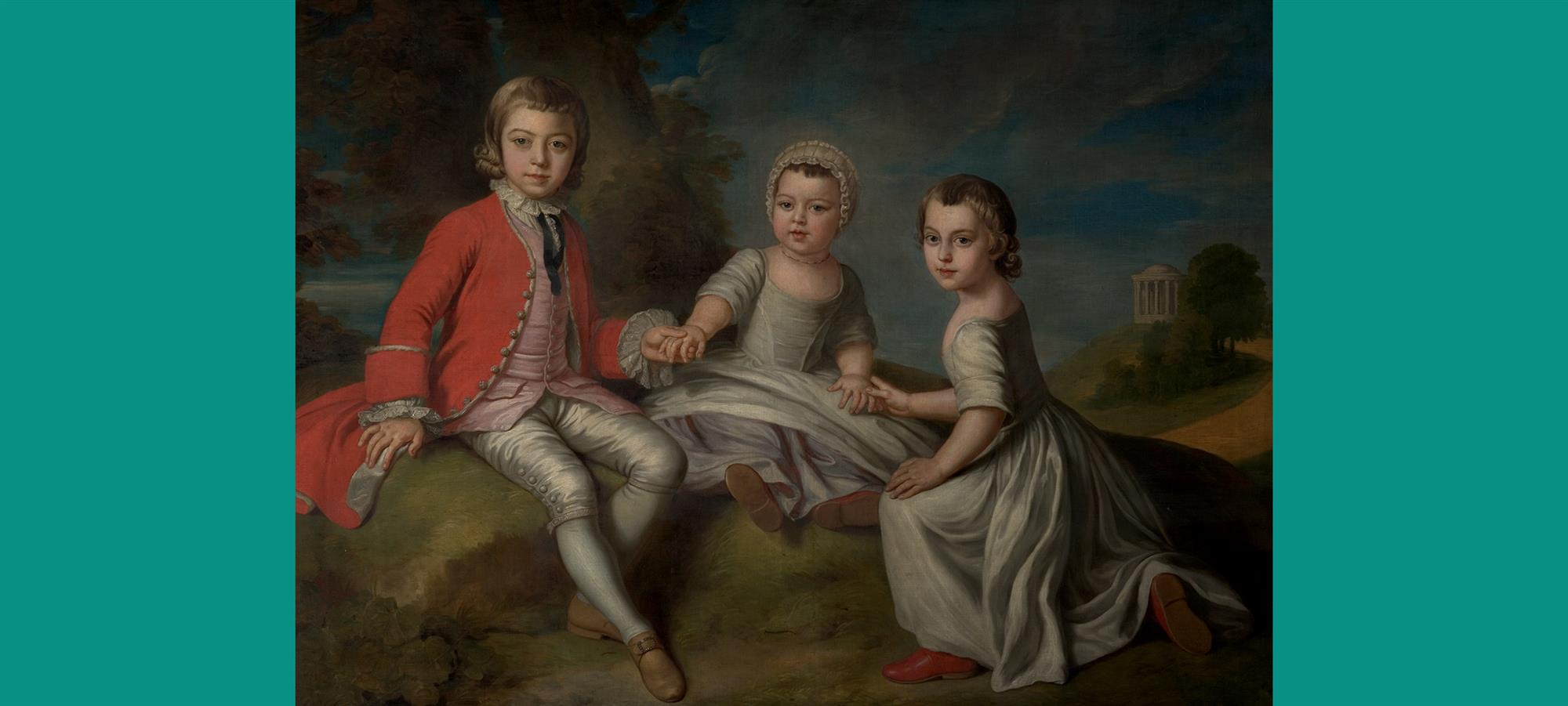Whilst working from my kitchen table, with the Djanogly Gallery closed for the foreseeable future, I thought what better time to bring to light some of the art works in the University’s collection. Normally, these can be difficult for the general public to see because of where they’re displayed or because they are kept in store for their protection. Each week we’ll fetch one of those works ‘out of store’. – Neil Walker, Head of Visual Arts Programming
CHILDREN OF THE 2ND DUKE OF NEWCASTLE (C. 1757)
By William Hoare of Bath (1707-1792)
Those of you who’ve been following my weekly blogs may recall the beautiful pastel portrait of a 21-year old Lord Lincoln (later 2nd Duke of Newcastle) by Rosalba Carriera. I’m fast-forwarding now a few years to this, a painting of his children, also part of the large art collection bequeathed to the University by the Newcastle Estate.
Portraits of children increased in number in the eighteenth century. At the same time a more recognisably modern concept of childhood gradually took hold. Childhood came to be seen as a phase of life distinct from adulthood and here the Duke’s offspring are portrayed appropriate to their age rather than as mini adults. A surprising aspect of this family line-up is the fact that all the children depicted here are in fact boys. From left to right they are: Henry (7), John (2) and Thomas (5). As was the custom, the youngest and middle child have not yet been breeched - literally put into boy’s breeches - and so are shown in the dresses customarily worn in infancy by both sexes. Despite their slightly wooden pose there’s a touching informality in the way the two elder brothers hold the hand of the youngest. For the costume historian, there are some lovely details such as Thomas’ bright red leather shoes and Henry’s downturned lace collar with its little black ribbon cravat.

As was increasingly the fashion, the children are presented in a natural or landscape setting which has the appearance of one of those stock backdrops that would, in years to come, be used in portrait photographers’ studios.
This connection with nature reflected contemporary views of childhood as a state of innocence. But look more closely and you’ll see that this is not nature in the raw but a landscape controlled by man: to the right a sweeping path leads our eye to a faux Roman temple atop a hill.
It’s a reminder that these boys are heirs to wealth, property, land and the benefits of a classical education. Their father, remember, had the means to reclaim vast acres of land from Sherwood Forest to create Clumber Park that would become the family seat.
Despite their obviously privileged upbringing the few facts we have of this trio gives a stark picture of life expectancy at the time. One child is missing, the Duke’s firstborn, George, who had died five years earlier at the age of six. Within three years of this painting being made the boys will be motherless. Neither Henry nor John will see their thirties and Thomas, who will succeed his father to become 3rd Duke, will only just get to what we now consider middle-age before he too will die.
The painting was made by William Hoare who produced a number of family portraits for the 2nd Duke that have entered the university’s collection. Hoare moved to the rapidly expanding spa town of Bath in about 1740, no doubt to capitalise on its popularity with the wealthy classes. He was its most fashionable portraitist until the arrival of Thomas Gainsborough in 1759.
To find out more about William Hoare of Bath, and to see more of his artworks, visit Art UK's website.